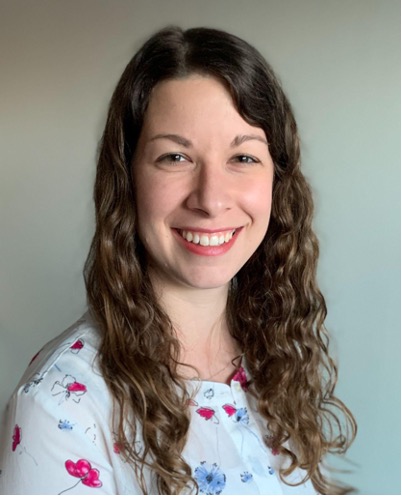
Hi! I’m Emily Parrott, PhD, Senior Director of Research & Evaluation at Thrive Scholars. I have over 15 years of experience in research, evaluation, and nonprofit management—including serving as in-house evaluation staff and an external consultant—and I’ve learned a lot about the impact that strategic data collection and utilization can have on nonprofits. I’m writing to pass on four key takeaways from my experience that can help evaluators build data capacity at their organizations.
Data capacity building starts with the end in mind
Nonprofits collect data. We know it’s important. But are we collecting the right data? Most often, I begin my time with an organization by developing (or reviewing) a logic model that helps to outline the most complete, most simple, most logical illustration of programming and answer the question: What are our intended outcomes? From there, we review and re-tool any data collection processes and procedures to align with our intended outcomes. Beyond helping me align metrics to outcomes as an evaluator, creating these logic models also helps staff align their work across the organization and helps build excitement for the data collection that will come in the months and years to follow!
Great evaluation requires genuine collaboration
As the internal evaluator, I have expertise in evaluation that my colleagues don’t—but they have expertise in our programming that I don’t have! We genuinely need each other to do and evaluate our program well. Their expertise informs the evaluation we do, and my expertise informs the strategic changes we might make to improve our program. From the very beginning, I build my evaluation planning process as collaboratively and inclusively as possible so that we see each other as experts navigating data collection, analysis, and utilization together.
Lessons Learned
Data utilization relies on relationship-building
I’ve found that data can be collected, stored, and analyzed well but its utilization is dependent on thorough relationship-building—and a lot of meetings—which I have to balance with time for myself to do the deep work required to be an effective evaluator and expert in the field. Many evaluators are great at data storage, collection, and analysis but struggle with supporting staff to utilize data in their everyday work and decision-making. Building relationships with the folks who need data will help them use it more often and more effectively—and it will make your evaluation practice better as you incorporate what you learn from your colleagues into your evaluation work.
Having a strategic evaluation practice helps staff navigate ambiguity
In several roles I’ve had, I’ve found that internal evaluation staff comes on board right as an organization is on a huge internal growth trajectory. This means that the organization itself is often moving from a youthful to a more mature energy and structure—which brings a lot of change and ambiguity for staff which can feel especially stressful when data is collected and used to evaluate impact (of the organization or staff) with the same youthful energy. Supporting staff to develop logic models, audit and re-tune data collection, and facilitate conversations about findings from data analysis can help staff feel more secure in their mission alignment, day-to-day work, goal-setting, impact assessments, and strategic decision-making and planning. It’s a win for everyone!
These are just a few of my learnings in my time as an evaluator—I hope they resonate with you or are useful as you hone your own evaluation practice. I’m curious to hear form others: what have you learned over the years?
The American Evaluation Association is hosting Nonprofits and Foundations Topical Interest Group (NPF TIG) Week. The contributions all this week to AEA365 come from our NPF TIG members. Do you have questions, concerns, kudos, or content to extend this AEA365 contribution? Please add them in the comments section for this post on the AEA365 webpage so that we may enrich our community of practice. Would you like to submit an AEA365 Tip? Please send a note of interest to AEA365@eval.org. AEA365 is sponsored by the American Evaluation Association and provides a Tip-a-Day by and for evaluators. The views and opinions expressed on the AEA365 blog are solely those of the original authors and other contributors. These views and opinions do not necessarily represent those of the American Evaluation Association, and/or any/all contributors to this site.
